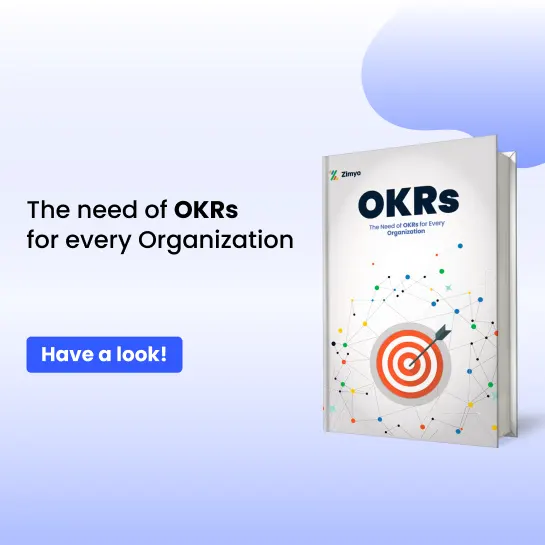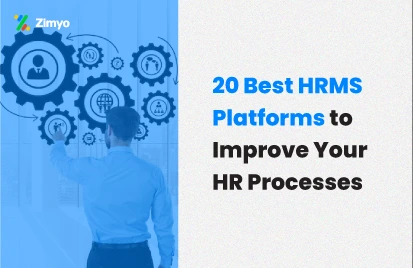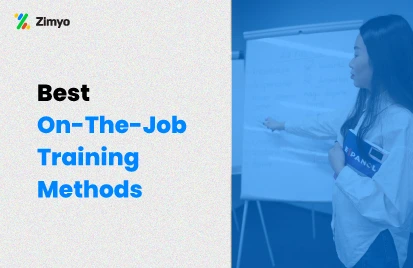Upon fresh graduation out of college, Anderson’s spirits were filled with youthful enthusiasm. With aspirations that touched skies, he always delivered whenever his organization needed him. However, in a time of dire needs, when he could actually use some time for himself, his simple leave application was denied owing to judgemental flaws in (un)popular company policies. Little did the company understand that to live a hassle-free life whilst adhering to the Code of Conduct meant more to Anderson than citing the flaws in the leave management process.
Now, neither did the company command the respect of young Anderson, nor were his energies unidirectionally directed to heeding to the best of the company’s interests. Crappy/Iucky story? Well real-life stories do not have talking animals or fairies, they have lessons! Howsoever nonsensical may it seem, yet there are parallels to draw from this icky narrative. The absence of a proper leave management system in place not only had the firm inappropriately handling cases, but it cost them the loyalty, trust and even enthusiasm of one of their own – and this is not an isolated, rare case.
Make this a common affair and behold! You have a team filled with an unmotivated abiding bunch of geeks (for the best ones are already out of your fist, or they will soon be!). Let’s modify the scenario a little now – Anderson’s company had a proper leave management system deployed, which takes into account one’s performance, past records and accordingly determines the perks in attendance. Also, as all this is mostly automated via suitable software and professional service providers, there are minimal flaws and the probability that organizational flaws/grudges/misunderstandings/misinterpretations get in the way is zero.
Not only does Anderson get his much needed and deserved break, but he comes back to serve with renewed zeal and enthusiasm. But what exactly is the causality of all this awesomeness? It’s a simple leave management system! A leave management tool chiefly encompasses the process that employees used to apply for a break from work and their superiors used to grant or deny their leave, based on company regulation laws and policies.
It ensures a proper and a just procedural system that heeds to employee’s needs and organization’s policies simultaneously. Varied in application methods (encompassing fingerprint time attendance, electronic leave management and employee attendance systems), this system is exclusively targeted at maximizing and motivating employee attendance, with appropriate procedural incentives at its disposal. What’s more?
This particular ‘awesomeness’ acquires special importance when applied to the context of upcoming start-ups or that of general small and medium enterprises (SMEs). Start-ups in particular need to draw lessons from stories like Anderson’s to ensure that in this cut-throat competition of securing investors and grabbing customers/contracts, they are able to foster (read ‘hold on to’) the best talent available in the market. Other SMEs are not the blessed exceptions to this either!
Care for a sneak-peek into why deploying a proper leave management system is absolutely indispensable for your company? Well, here goes:
- Employee Satisfaction – A proper leave management system and a flawless employee attendance system generates satiation, assurance and confidence in the company at the employee level. With their perks and safety bowls being handled by a machine, the employees have nothing to worry about but their performance!
- Transparency – A major determining factor in satiation levels within organizations, transparency ensures a justifiable sequence of requests, actions and approvals. With options like fingerprint time attendance, electronic leave management systems, everyone is assured that their work and efforts do find a proper and secure slot in the records, besides the soothing guarantee that no idiot who knows how to butter the supervisor’s toast finds a (dis)tasteful break for himself therein.
- Automation – With sophisticated technological tools now available to take care of this tedious (and sometimes clumsy process), not only is the efficient handling of applications guaranteed, but the amount of time and resources otherwise dedicated to handling the processes concerned with leave applications can be redirected into productive tasks.
- Record Maintenance – The efficiency gained is not limited to the fast-tracking of the related processes, but also reflects in the records of the company. With automated systems in place, you can be sure that every application and subsequent actions are properly recorded in appropriate databases for review and correctional purposes.
From the above discussion, it becomes clear that employee leave management systems deployed in start-ups and SMEs will bring ease to the organization. The simple reason for establishing such a system is that start-ups and SMEs function in the growth stage of their life cycle.
For enterprises that are in their nascent stage of development, it is necessary to focus on the overall improvement of the organizational culture. The organizational culture is derived from the people and the values the people hold.
Electronic Leave Management Systems like fingerprint time attendance aid in enriching the culture of good practices like punctuality, in the organization. When a system is dedicated only towards calculating the employee attendance in an organization, it gives a clear picture of how motivated and determined are the employees in that organization. When employees are asked to record their attendance electronically on a daily basis, it gives insights about how consistent the employee has been, how many days was he absent from work, the reasons for absenteeism, etc.
Such a leave management tool can greatly help in motivating as well as monitoring employees, who serve as the pillars of start-ups of SMEs. Leave management tools can help in assessing the employees in terms of their determination and commitment towards work. Based on the number of leaves taken per month, per quarter, per year, employee assessment can take place for increment or bonus pay. Keeping the best interests of its employees should be one of the most common best HR practice to be followed by organizations.
Thus, through the leave management systems employees can be told beforehand about the number of paid leaves they can take per month, per quarter, and per year. Such a practice can prove to be highly motivating as employees will be aware in advance of the number of absenteeism they can make. Further, such a tool for managing the leaves taken by employees can be used to give incentives and bonuses to those employees who take minimal leaves in a year and show high commitment towards work.
Alternatively, employees who constantly take many leaves can be warned about this practice so that they can be motivated to work in a more determined fashion. For employees who continue to be absent for longer periods or beyond allowed limits can be marked by the organization to take suitable decisions on and rethink their postings and job roles. The systems can help in deciding the payroll for the employees and be a deciding factor in finalizing the variable compensation to be awarded to each employee. Deploying leave management systems has long become a common practice in most organizations and is one of the biggest reasons for successful functioning. Companies are now following the concept of learning organizations where they constantly indulge their employees in a learning process.
Such practice has gained momentum because it largely focuses on employee development and training on a continuous basis. Organizations now believe that it is not only important for them to be customer-centric but also equally important to be employee-centric. In the 21st century set-up, it is important for high growth entities like start-ups and SMEs to invest in their people.
When an employee approaches daily work, he/she is aware of the work to be done in some cases and prospective work that might come urgently at any point in time. Only when employees fully dedicate themselves to the mission and vision of the organization can they contribute to their maximum efficiency. Only when there is a system of proper give-and-take in the organization, can such dedication be observed. When employees feel that their benefits are taken proper care of by their employers, they will feel satisfied and motivated as well to give back to the organization as they feel a sense of affective commitment to the organization.
For employees who do not buy into the values of the organization, it is difficult to concentrate. Hence, such employees can be motivated to work with more determination by taking attendance on a daily basis and instilling a sense of normative commitment. Organizations are constantly working more to enhance the quality of human resources employed. Thus, start-ups and SMEs should also start paying heed to the best talent available and focus on retaining employees, and adopt the practices like competitive organizations, if they do not want to face high attrition rates.






